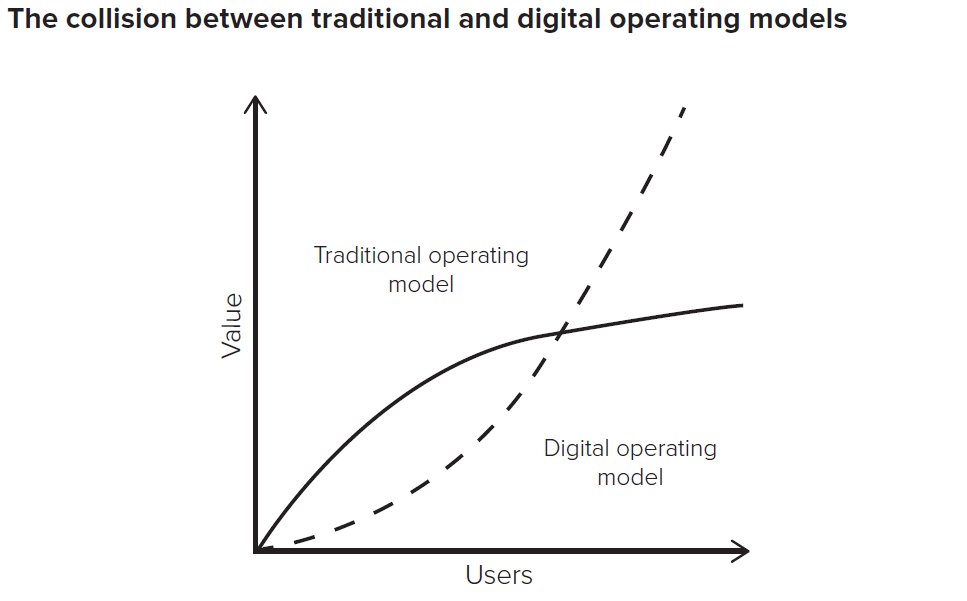No longer just “cool tech” or an innovative way of doing business, artificial intelligence (AI) has shifted from a novelty to a necessity. In their upcoming book Competing in the Age of AI: Strategy and Leadership When Algorithms and Networks Run the World, Harvard Business School professors Marco Iansiti and Karim Lakhani illustrate how the data, algorithms, and digital networks underpinning AI have replaced traditional strategy and operational paradigms. Drawing upon the pair’s extensive research and engagement with hundreds of organizations — including Amazon, Microsoft, and Disney — the book presents a new framework for designing organizational structure and developing competitive strategy.
“The attention around AI tends to focus on the latest technologies,” Iansiti argues, “but the firms that are thriving have harnessed the subtle, inherent power of AI to break down traditional operational constraints, capture new value, and accelerate growth and innovation.”
What sets AI-driven firms apart is their ability to avoid the inefficiencies and bottlenecks that plague growth when complexity — primarily caused by humans — outstrips organizational capacity. These firms strive to construct a model for operational execution that does not require human intervention (ideally, no real-time “human bottlenecks”). In the new digital operating model, most operational tasks circumvent humans entirely. The ultimate aim is to automate and digitize as many operational processes as possible to take advantage of digital reliability and scalability.
Transcending traditional constraints
One company that Iansiti and Lakhani examine is Ocado, an online grocery delivery company in the UK that redefined itself through its adoption of AI. Algorithms draw from the rich internal and external data collected from Ocado’s purpose-built central platform to optimize all aspects of the service delivery chain. From anticipating and averting potential shortages from the farms in their supply chain to real-time delivery route optimization, AI technologies drive the majority of the company’s operations. Ocado also revolutionized its operations by setting up highly-automated warehouse systems. In each of these warehouses — some as large as five city blocks — algorithms coordinate the movements of thousands of bots, miles of conveyors, and hundreds of thousands of grocery boxes to optimize efficiency and freshness.
By re-engineering traditional operating models, firms are able to transcend traditional constraints. The restructuring goes beyond simple task automation to deploy an operational architecture that is designed to leverage the full power of AI to drive unprecedented scalability, scope (variety), and learning. The appeal of digital technologies is the ease of recombining and connecting them to create and capture new value. Iansiti and Lakhani remark on Ocado’s ability to do just that, describing it as “an AI company disguised as a supply chain company disguised as an online grocer.”
AI-driven companies compete by looking beyond the initial product or service to the full potential of the technology available. As the number of users grows, so does the complexity of operations until it reaches a point where it overwhelms the processes of the traditional operating model. However, digital operating models — supported by digitization, analytics, and AI — are able to capitalize on network effects as users increase. (see graph below). AI-driven technologies not only manage complexity better, they also learn from it to improve operations. This capacity enables companies like Ocado to upend the traditional diminishing returns curve and surpass established competitors.

“In this new AI-driven operating model, employees do not deliver the product or service anymore,” Lakhani explains, “they design and oversee the algorithms and software that do.” Executives in digital firms are now freed up to create and innovate — to expand networks into business ecosystems and safeguard them.
Safeguarding against amplified risks
The inherent features of digital technology that foster unprecedented scale, scope, and learning can also intensify errors, missteps, and oversights. Echo chambers, algorithmic bias, and the ongoing epidemic of data breaches have serious repercussions. Ultimately, algorithms are only as good as the data that trains them. Too often, the rate at which data is amassed and shared outpaces the implementation of security and governance measures meant to safeguard it.
No one can remove these risks entirely, but Iansiti and Lakhani argue that executives do have a responsibility to ensure digital technologies accurately reflect reality, recommend judicious actions, and protect sensitive data. Connecting platforms through APIs can accelerate innovation and elevate customer experience, but it can also unwittingly create opportunities for third parties to exploit private data. Transgressions like these not only tarnish those directly involved, they also erode public trust and contaminate the business ecosystems around them. To survive in the AI-driven business world, leaders must align their strategies and operations with solutions to these new challenges that allow the entire ecosystem to thrive.
